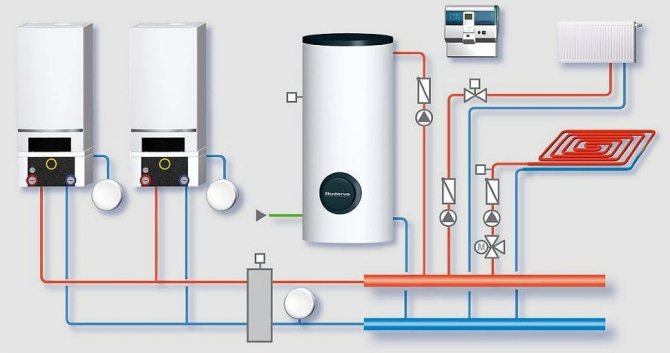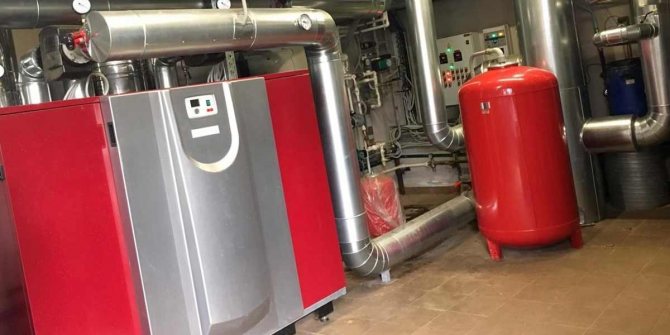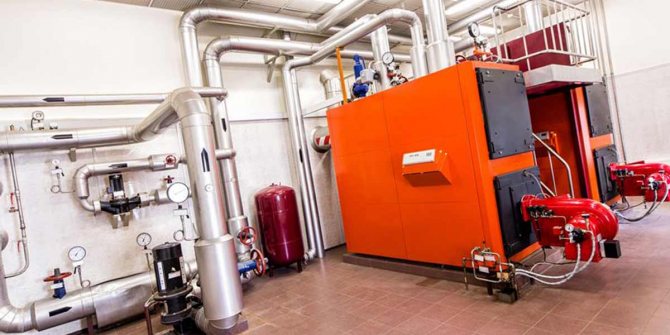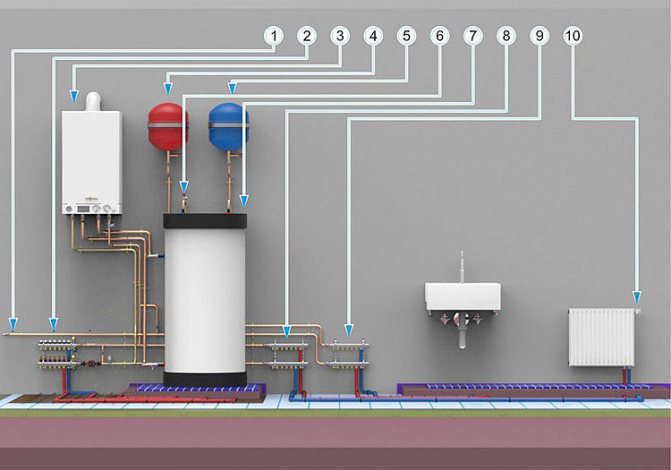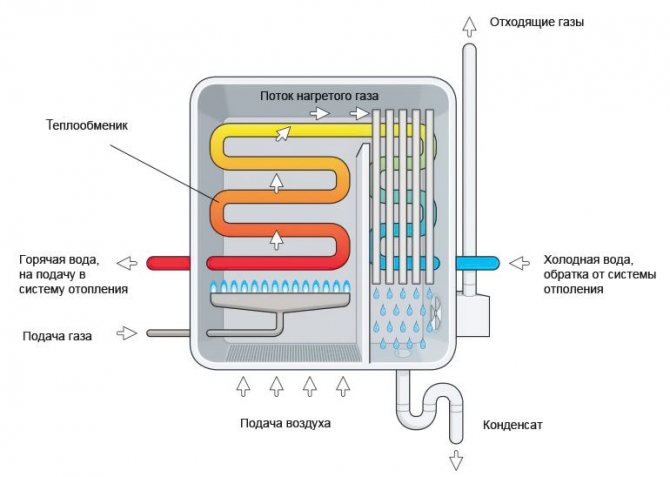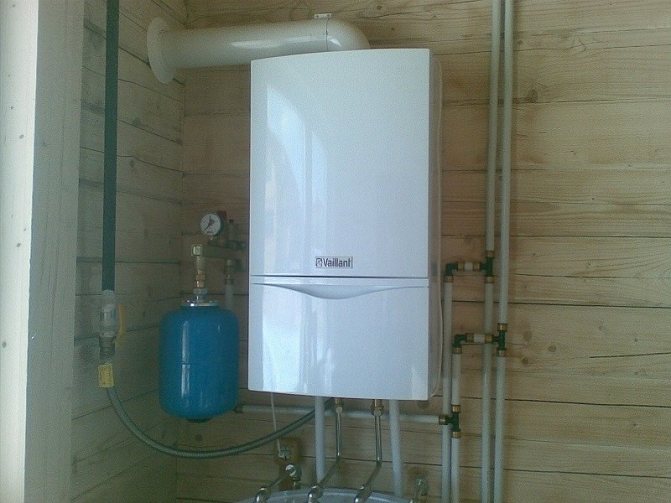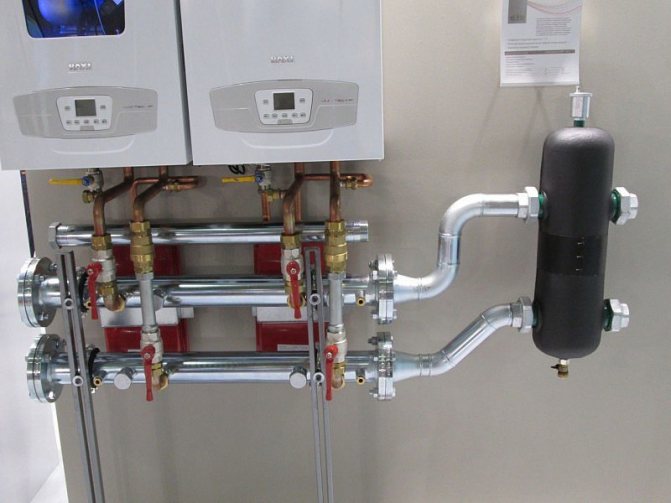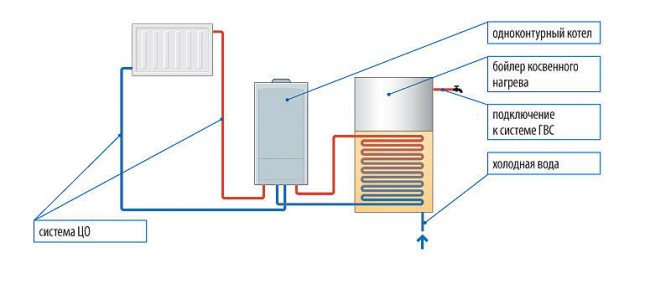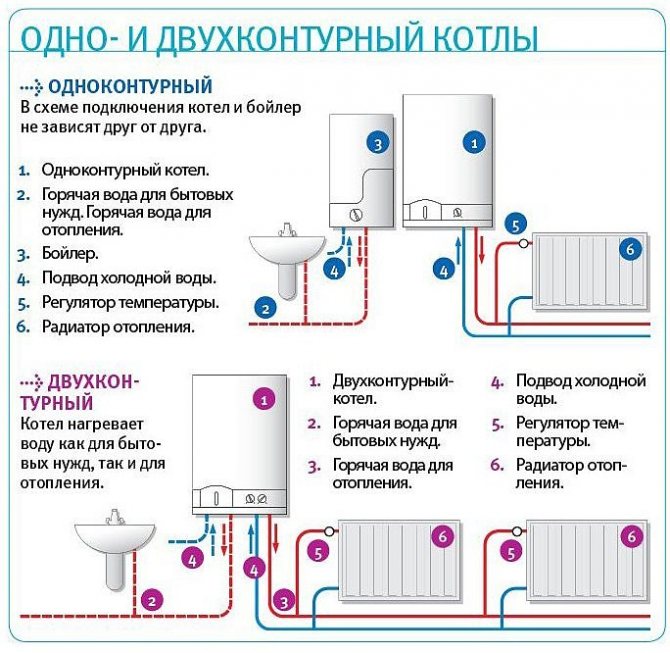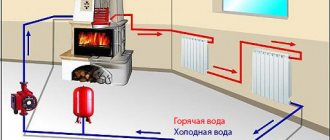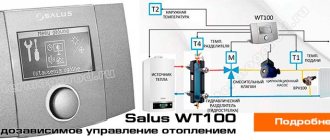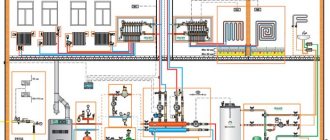It is customary to build autonomous heating systems for private houses or other premises on the basis of gas boilers.
This is the most economical and efficient heating method, which does not take unnecessary time and effort from the owner and does not require constant monitoring of the system operation.
There are two main design options for such boilers, the difference between which is in functionality.
Some work only to heat the house, others are capable of supplying hot water in parallel with heating.
These two groups are represented, respectively, by one- and two-circuit units, which need to be considered in more detail.
What is the difference between double-circuit and single-circuit boilers
The fundamental difference between single and double-circuit boilers is the functionality of the units.
If the first group of equipment is intended only for supplying a heating agent with a heating circuit, then the second, in addition to heating the house, performs an additional task - the preparation of hot water for domestic needs.
As the name implies, in dual-circuit models there is an additional circuit designed to heat water. At the same time, the main (basic) function for both groups of boilers is heating the coolant for the heating system.
It is provided by the main components of the structure - a gas burner and a primary heat exchanger, which is built into the heating circuit together with a circulation pump.
IMPORTANT!
Non-volatile boilers do not have a circulation pump and are designed for operation in natural circulation systems.
The function of heating hot water is additional - it is provided due to the partial transfer of thermal energy from the hot heat carrier, which at the exit from the main heat exchanger enters the secondary, plate type.
It heats the water in a flowing mode, which creates some restrictions on consumption - the stronger the draw-off, the less time the water flow has time to heat up.
Some models can be configured to prioritize a particular circuit, when, with active hot water consumption, the temperature in the heating system decreases or, conversely, the DHW temperature drops.
To solve the problem of efficient distribution of heat energy between the two circuits, a combined or bithermal heat exchanger was created. It is a coil rolled from a coaxial pipe.
The outer volume is occupied by the coolant, and the inner volume is occupied by hot water. Heating occurs simultaneously, no heat transfer losses occur. the efficiency of such a device is much higher.
However, experts speak reservedly about bithermic heat exchangers, since they quickly fill up from the inside with lime deposits, which are extremely difficult to remove.
Flushing of such a heat exchanger is a laborious and ineffective procedure, and replacement is too expensive.
This significantly limits the demand for models with a combined heat exchanger, although no one denies the increased efficiency of these units..
For a more visual display of the difference between the design of single and double-circuit boilers, we will draw up a table:
| Features and Capabilities | Single-circuit | Double-circuit |
| Heating the coolant | + | + |
| DHW preparation | — | + |
| Number of heat exchangers | 1 | 2 or 1 * |
| Cascade connectivity | + | — |
| Unit capacity limitations | — | + |
| Heat energy losses | Minor | Average |
* for double-circuit boilers with bithermic heat exchanger
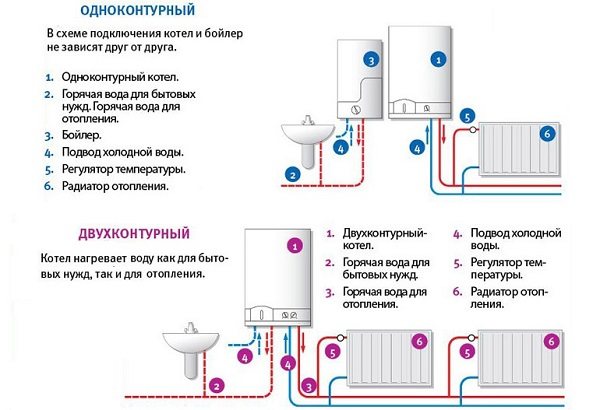
Single-circuit boilers
A single-circuit boiler is an installation that provides heating and preparation of the heating agent of the heating circuit in accordance with the specified operating mode of the system.
The structure includes:
- Gas burner combined with a heat exchanger.
- Circulation pump.
- Turbofan.
- Gas equipment.
- Three-way valve.
- Electronic control board equipped with a self-diagnosis sensor system.
- Housing, control panel.
- Chimney.
There are non-volatile models in which there are no devices powered from the mains.
They have a simplified design, but are able to provide heating of the house in the absence of power supply.
Types of single-circuit boilers
Single-circuit boilers are:
- Floor standing... Placed directly on the floor (or on a stand). They can have a lot of weight and, accordingly, high power. Many floor standing boilers are equipped with a high efficiency cast iron heat exchanger with a large mass. Some models are connected in a cascade, forming powerful connections for heating buildings or structures of a large area and volume.
- Wall mounted... Compact gas boilers that are mounted on solid (preferably load-bearing) walls. The specificity of the installation requires weight limitation, which automatically affects the power of the boilers.
In addition, single-circuit boilers can have different versions of the combustion chamber.:
- Atmospheric (open)... The air comes directly from the room, and the smoke is removed in a natural way under the action of furnace-type traction.
- Turbocharged (closed)... Air intake is carried out from the outside using a turbofan. It also creates pressure that displaces smoke and other gases formed during fuel combustion outward.
All single-circuit boilers can have additional functions - remote control, programming the operating mode, etc.


Principle of operation
The operation of a single-circuit boiler is aimed at solving a single problem - heating the coolant for the heating circuit.
The unit is connected to the break in the system, one branch pipe is connected to the straight line, the second to the return. The liquid flow is continuously moving through a heat exchanger, which is located in the heating zone of the gas burner flame.
At the outlet of the heat exchanger, the flow enters a three-way valve, where it mixes with the colder flow from the return in a predetermined proportion. Having received the required temperature, the coolant is again removed to the heating circuit.
The temperature is adjusted by adjusting the operation of the three-way valve.
NOTE!
Nonvolatile models work on the same principle, only the flow circulation occurs naturally.
Advantages and disadvantages
The advantages of single-circuit boilers include:
- Simplicity and reliability of the design.
- No power loss during heat transfer.
- Ability to develop great power.
- Possibility of connecting an external indirect heating boiler to obtain hot water.
- The cost of single-circuit boilers is lower than that of more functional samples.
The disadvantages of single-circuit boilers should be considered:
- Lack of water heating function.
- Limited options compared to dual-circuit models.
IMPORTANT!
Some users argue that single-circuit boilers in conjunction with an external storage are much more convenient and efficient than double-circuit designs.
What should a buyer pay attention to when choosing a heating boiler?
When buying a single-circuit or double-circuit boiler, you should pay attention to its power, performance and quality of components. The first step is to inspect the burner. The economical operation of heating equipment directly depends on it.
It is important that its design directly contributes to the displacement of air and gas, which in turn ensures complete combustion of the fuel without chemical burnout. The disadvantage of the burner is the additional noise that is generated when the fan is running.
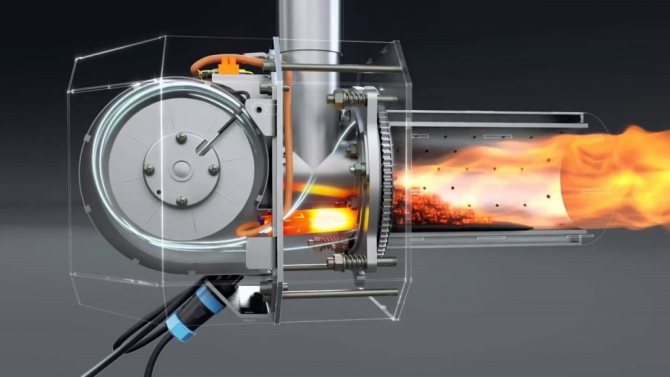

Heat exchanger in the boiler. It allows you to regulate the level of heat supply. It is best to purchase boilers with a built-in heat exchanger made of steel or copper. These components are characterized by increased resistance to the negative influence of the external environment. Among other things, such materials have good thermal conductivity.
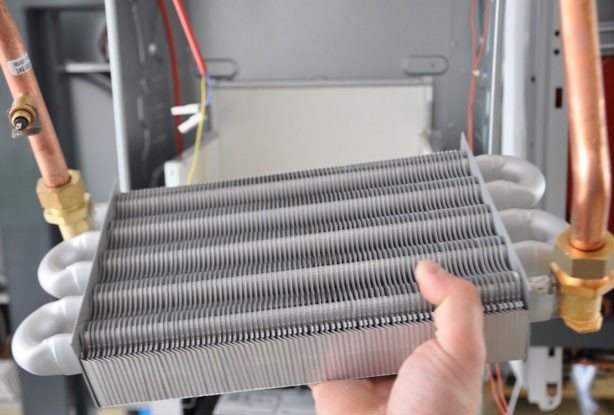

Automation and electronics in the heating boiler. It is good if your boiler is equipped with special sensors. This will allow without any problems by pressing a couple of buttons to adjust its operation and performance.
But you need to understand that in a situation related to a power outage, the protection of the heating boiler will definitely work and then the fuel supply will stop. Therefore, when buying, choose models that provide for its operation and regulation, even in emergency cases.
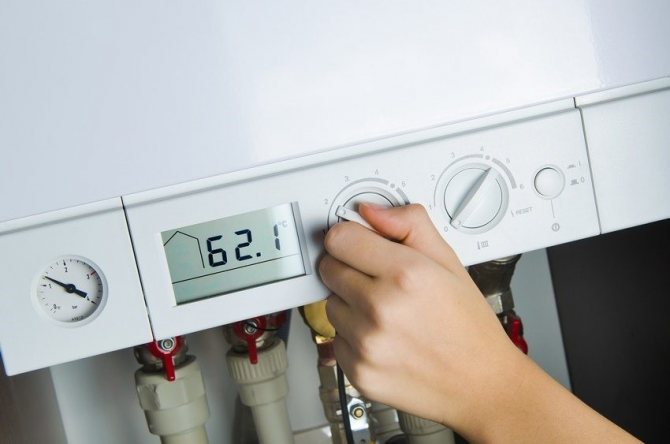

Which manufacturers should you choose? Many buyers believe that the choice should be stopped on boilers of Russian and German production. They are easy to operate, quickly assembled, and can be easily serviced. The repair will not give you an extra headache, as even in the smallest settlements there are service centers for the repair of heating equipment.
By the way, Italian-made heating boilers cause complaints from buyers who complain about a short warranty period, problems with repairs and the search for component parts. Therefore, you need to carefully consider the choice of equipment that provides warmth and comfort in your home.
Double-circuit boilers
Double-circuit boilers have an additional option - DHW preparation.
At the same time, the basic function (heating the coolant) is the main one for them, the operating settings set the priority of heating over DHW.
Views
By way of installation, double-circuit boilers are:
- Floor standing... Installed directly on the floor.
- Wall mounted... They are hung on a load-bearing wall.
By the way of heat transfer:
- Convection... The usual heating method is in a burner flame.
- Condensing... Two-stage heating - first preheating from thermal energy obtained by condensation of moisture from flue gases. This is followed by conventional heating using a gas burner. Since the heating medium has already been prepared, it is possible to reduce the gas consumption and the overall heating mode without affecting the final result.
By type of heat exchanger:
- Separated... There are two heat exchangers in operation - primary (heating the coolant) and secondary (heating the hot water supply from the hot coolant).
- Combined (bithermic)... A coaxial type of heat exchanger is used, in which both the heat carrier and hot water are simultaneously prepared.
By type of combustion chamber:
- Atmospheric.
- Turbocharged.
The designs of single and double-circuit boilers do not have fundamental differences, but are intended to work in different conditions.


Principle of operation
The operation of a double-circuit boiler differs from single-circuit designs only by the presence of an additional heat exchanger.
At the exit from the primary, the coolant enters the secondary heat exchanger, where it heats the water for hot water supply... The rest of the work is no different and follows the standard scheme.
Advantages and disadvantages
The advantages of double-circuit boilers include:
- The ability to receive both heat and hot water from one device.
- Efficiency, economy and compactness.
- A wide range of functions and capabilities.
- DHW heating can be switched off for non-use.
Disadvantages can be considered:
- Limited amount of hot water.
- Dependence of the temperature in the heating circuit on the intensity of DHW analysis.
Double-circuit boilers are considered more attractive, capable of solving all issues.
Which boiler to choose after all
The choice of this or that type of gas boiler is determined by the working conditions and the needs of people.
When deciding which boiler is more suitable in a given situation, it is recommended to consider all the criteria:
Dimensions (edit)
The size of a gas boiler is not determined by its functionality. Most often, in one model line, all units are produced in the same frame size.
Wall-mounted boilers are more compact, but the main factors affecting the size are the power and performance of the units.
Life time
The duration of operation of gas boilers is determined by the operating conditions, loads and the degree of power.
In addition, an important indicator is the quality of the water - the appearance of scale quickly destroys the heat exchanger.... This applies equally to single and double-circuit boilers.
Saving
Users note some advantage of single-circuit boilers in terms of gas consumption. This affects fuel costs... In this case, if an external boiler is connected, the gas consumption increases.
Convenience
In terms of ease of use, double-circuit boilers definitely benefit. They do not require the installation of additional water heaters, which greatly simplifies the creation of communications.
Single-circuit models are convenient only where you only need to heat the room, but such situations are rare.
Price
The cost of both those and other boilers mainly depends on the power and other parameters of the boiler.
However, if we compare a single- and double-circuit model with the same characteristics, then a single-circuit boiler will be cheaper.
Heating area
The heating area of the boiler depends on its capacity. It is taken into account at the rate of 1 kW of power = 10 m2.
There is no dependence on the set of functions in this case, the ratio is equally true for both types of units.
Additional functions
Additional functions, as a rule, are equipped with dual-circuit models. Here and remote control, and programming, and the ability to connect a room thermostat.
Single-circuit boilers are simpler and less equipped with additional devices due to lack of demand.
Conclusion - which boiler is better
It is impossible to say unequivocally which boiler is better. We must be guided by the needs and objectives of the premises, consider the number of people, lifestyle and other factors.
Both types of boilers may be needed or undesirable in different situations..
In order to name a suitable option, it is necessary to consider all the influencing factors, and only then make a decision.


Testimonials
With a clear understanding of how a single-circuit gas boiler differs from a double-circuit one, buyers choose a convenient model for themselves and share their reviews on the Internet. The voices are split.
You will be interested >> Gas boiler with cast iron heat exchanger
Some are strictly for a single-circuit boiler and the presence of an additional boiler, and someone defends the positive qualities of a double-circuit model. All reviews boil down to the fact that for a small room with one bathroom and a kitchen, it is enough to buy a high-quality boiler with two circuits, which can work both for heating water and for heating a house.
The reviews of those who have such models in huge houses are not so enthusiastic, since hot water cannot be supplied immediately to a large number of taps.
If there is a boiler with two circuits, and more than two points of water are working at the same time and a significant area is heated, the quality of work drops dramatically. Users advise in such cases to still use one circuit with a large boiler. From the point of view of economy, a device with two circuits is considered a more profitable option, since it heats water when it is needed.Many for a double-circuit boiler are advised to put stabilizers so that the device does not burn out the board, and it performs its functions as long as possible.
In any case, it is important to understand that in the presence of a single-circuit boiler, it is better to install the boiler not electric, but indirect heating. This is a device that uses the main heating medium to heat water. This will be more economical than paying extra for electricity. Single-circuit and double-circuit gas boilers differ in many respects. Therefore, it is better to focus on a general set of indicators.
Also, many advise choosing a wall-mounted boiler, since it is more convenient and compact. But here it all depends on personal preference. There are lovers of large powerful models that are installed on the floor.
Read about which boiler to choose - wall-mounted or floor-standing, in this article.

